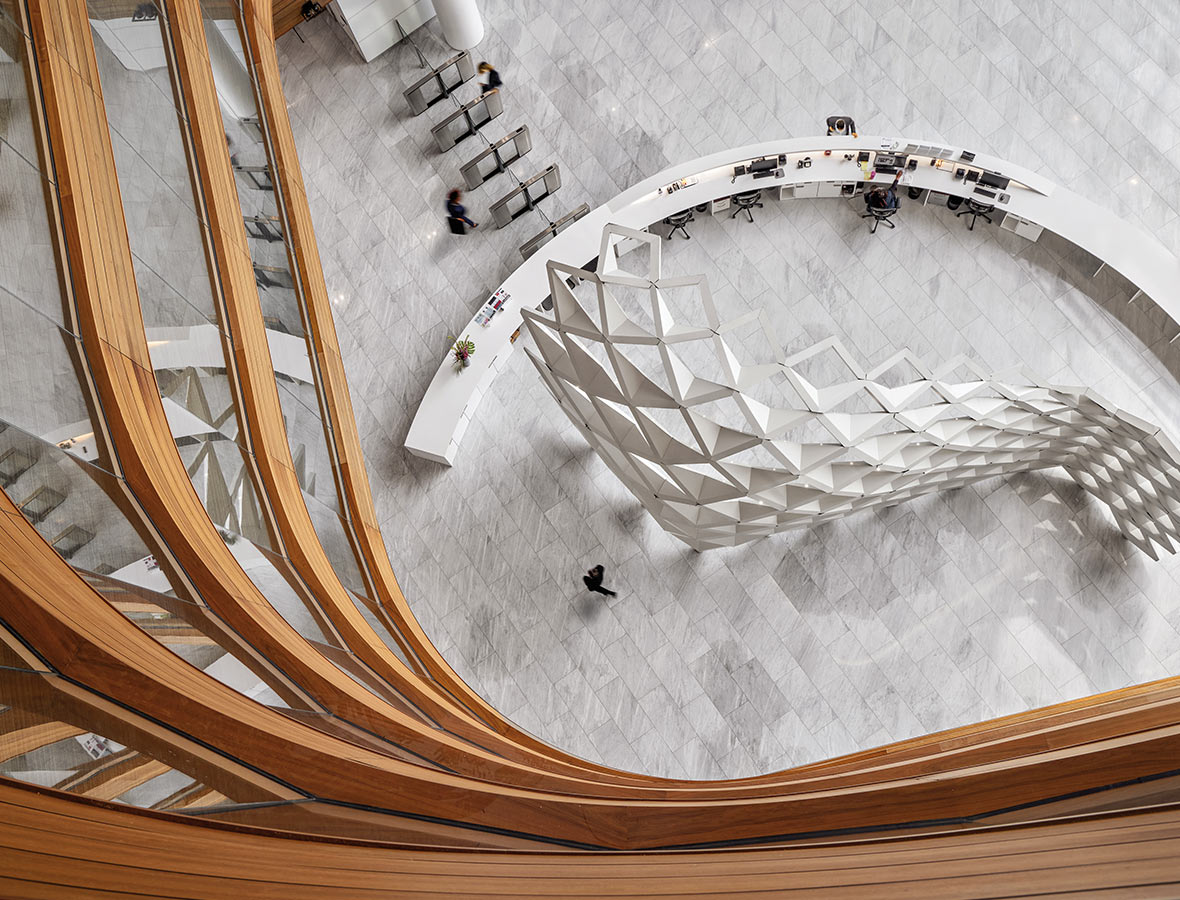Trends to Watch: The Future of Cities Relies on Multiuse Districts
November 30, 2023
Editor’s Note: This blog is part of our Design Forecast blog series, looking at what’s next in 2024 and beyond. Here, we sit down with J.F. Finn and Beatriz De Paz, global leaders of Gensler’s Mixed Use & Retail Centers practice, to discuss what’s next for the future of cities and multiuse districts.
What are the biggest trends that you’re seeing impacting mixed-use developments across the globe?
Bea De Paz: We are learning to design for future flexibility. For example, if we are designing for an office building but we know that in three years we might need to convert it to residential, we can do so. So, it’s a matter of understanding all the moving parts and pieces and allowing for tenant flexibility.
The rise of entertainment is another big trend. Entertainment has long been an important component of projects in Asia, Europe, and the Middle East. Experiences are increasingly driving traffic to destinations. All over the world, we’re creating entertainment-anchored, mixed-use developments, and focusing on creating spaces to allow for experiential programming.
Retail centers remain a strong driver of commerce in the rest of the world, but in the U.S., it has had a bad rap. But the mall isn’t dead; it has transformed. In Latin America, malls and retail-centered projects are still prevalent, though they are also undergoing conversions and repositioning just like in other regions. Retail is such a big part of what makes a mixed-use development successful, because it’s perceived as public space, and it’s always flexible and transforming depending on what tenants you want to bring in.
The resurgence of the luxury market is something we’re seeing, especially in Asia and Europe. Creating aspirational retail/public spaces is a growing trend, so we are creating shared, public spaces that feel more lush and more luxurious in international markets.
There’s also a blending between nature and buildings, with both biophilic design and spaces that blur the lines between indoors and outdoors. For example, in Mexico City, we have been asked to bring nature inside buildings to connect people with natural resources. On a larger scale, when we talk about a mixed-use project, landscape design is extremely important.

Why is public space so essential — and how is it a differentiator?
J.F. Finn: A successful mixed-use development needs robust public spaces to be able to plug in the targeted amenities that support the character and heart of a particular neighborhood. Public space can be a huge differentiator. And it’s important that the public realm can be programmed to bring in visitors from outside. It should be connected to the other parts of the development, but it’s also about the integration of the community. The public realm really begins to represent the “brand” of a place.
Bea: Developers are looking to architects, planners, and designers earlier in the process to help envision flexible programming strategies and destinations. We’re helping clients not only create a mix of uses but also a sense of place. That’s why entertainment has become so important — because even the public realm is an entertainment space. It becomes an aspirational space, a social space, or a discovery space, depending on what we’re creating there.
How are climate change risks impacting mixed-use developments?
J.F.: With climate risks increasing, developments must consider flexibility, adaptability, and sustainability through materials, infrastructure, and design to reduce risks and costs like rising insurance rates. Insurance company representatives are now telling developers that they need to build infrastructure and design projects with climate resilience in mind to control rising risks from natural hazards like flooding. In some cases, insurers are denying coverage for developments in high-risk coastal areas unless they meet stringent standards. This is creating challenges for repositioning existing buildings that may not be able to meet updated codes.
Mixed-use developments offer some advantages because their scale and flexibility allow for aggregating real estate in a way that can help offset insurance costs through risk pooling across different asset types. As climate risks and uncertainty rise in the coming years, mixed-use developments may leverage data-driven flexibility to future-proof investments facing rising insurance costs and rapidly changing market conditions.
How will storytelling continue to play a role in activating multiuse spaces and places?
J.F.: Effective storytelling is crucial for mixed-use developers to differentiate themselves. There’s such a craving for human interaction and community right now, and we are being asked more and more to integrate entertainment experiences into our mixed-use developments. To attract more users, developments are incorporating amenities like entertainment, sports, and festivals to foster community and tribal experiences. The Story of Place speaks to the “why” someone might consider visiting, living, opening a business, or even investing in a place. To make that direct connection to their sense of a community.
For example, we’re working on a project in Las Vegas with immersive entertainment experiences as the anchor. It started with master planning and storytelling, and it’s expanded to a series of districts that are grounded in a shared sense of community. And that momentum builds upon itself and becomes its own attractor. We are creating places for communities of people to gather their neighborhood tribes.
Bea: With their integrated, experiential nature, mixed-use developments are positioned at the forefront of fostering human-centered places and experiences that will be in higher demand as people increasingly crave opportunities for meaningful social interaction and activation of public spaces. With this inherent built-in flexibility and diversity of experiences, mixed-use environments can more easily flex with demand and the ever-changing needs of a development, offsetting risk and extending the life cycle.
For media inquiries, email .
